BERLIN (AP) — An imposing stadium with a dark history will host the European Championship final between Spain and England on Sunday.
Built for the 1936 Olympic Games, Berlin's Olympic stadium still bears the scars of World War II and contains relics from its Nazi past.
But the Olympiastadion, as it's known in German, is also associated with the rebirth of a democratic Germany after the war. It hosted matches during the 1974 World Cup in what was then West Germany and again at the 2006 World Cup, 16 years after German reunification.
Adolf Hitler was personally involved in the design and construction of the 100,000-seat track-and-field stadium after the Nazis assumed power in 1933, two years after Germany had been awarded the 1936 Games.
Initially unenthused by the idea of hosting the Games, the Nazi dictator changed his mind after being convinced of their potential for propaganda.
Plans to remodel the existing national stadium were quickly scrapped in favor of constructing a whole new sports complex, the Reich Sports Field, on the same site. Werner March is credited as the architect of Olympiastadion.
Drawing inspiration from the Colosseum in Rome, the stadium was designed to impress. The Olympic Square in front of the main entrance is tapered, with flagpoles and lines of trees on either side heightening the sense of perspective. The idea was to increase the dramatic effect, raising visitors’ expectations and making them feel part of the event.
Up to 2,600 workers toiled on the Reich Sports Field at one stage to have it ready in time for the Games, which started Aug. 1, 1936. The Nazi regime's racist ideology deeply influenced the project as construction companies were told to only hire “complying, non-union workers of German citizenship and Aryan race.”
Hitler watched from his stadium balcony as Jesse Owens, the Black American athlete, won four gold medals to become the star of the Games, dealing a blow to Hitler's notions of racial superiority.
However, the Games also delivered a propaganda victory for Nazi Germany. It won more medals than any other country and presented to the world a carefully crafted image of peace and tolerance that Hitler and his associates wanted. It was arguably the world’s first major case of sportswashing.
Olympiastadion was decked with hundreds of Nazi flags for the Games, and a swastika adorned one of the two towers holding the Olympic rings above the entrance. The swastika was removed in 1945.
Members of the Nazi paramilitary SA, commonly known as the Brownshirts, were ordered to stop their attacks against Jews during July and August 1936.
The Nazis were already pushing Jewish athletes out of German sports and there were only two whom the Nazis considered half-Jewish who were allowed compete on the German team — fencer Helene Mayer and hockey player Rudi Ball.
“It was done to try and silence the critics a little bit,” said Ryan Balmer, a tour guide with degrees in modern history and literature who has lived in Berlin since 2008.
The Nazis also used the Reich Sports Field complex after the Olympics. Italian dictator Benito Mussolini visited in 1937, when he was welcomed by thousands of torch-carrying Nazis on the May Field behind the stadium. Up to 800,000 people reportedly took part.
Olympiastadion and the Reich Sports Field were damaged in the war, though the stadium escaped relatively unscathed compared to the devastation wrought by Allied bombers in more central areas of Berlin. Many surviving buildings were reused with their Nazi iconography removed.
Olympiastadion fell in the British sector after the city was divided between the four victorious powers — the Soviet Union, the U.S., France and Britain. The British reopened the stadium in 1946 and maintained their military headquarters in the former Reich Sports Field until 1994.
Little was done to Olympiastadion after the war. It and the former Reich Sports Field were given protected status in 1966, when Hitler's balcony was shortened by one meter. The biggest renovations were made before Germany's 2006 World Cup, when the stadium was crowned with a roof.
There are no attempts to hide the stadium’s Nazi past — modern-day Germany is adamant that the atrocities of the Nazi era should not be forgotten. Information signs in English and German are placed around the stadium to inform visitors about the site’s history.
While the swastikas have been removed, some Nazi relics remain. An eagle adorns a pillar beside what is now the training ground of Hertha Berlin, which plays its home games in the stadium. The old bell from the Bell Tower still displays a Nazi eagle and Olympic rings, but the swastika has been partially covered.
In a sign of Germany's post-war rehabilitation, a large conference room in the stadium and a road running along the sports field's southern perimeter have been named after Owens.
Visitors have mixed feelings about the stadium, which has a capacity of 71,000 during the European Championship. Many fans who attend matches at Olympiastadion are preoccupied with their respective teams' fortunes and pay little attention to the information signs.
Balmer said the stadium could use "a more prominent reminder of how and why places like this were built.”
Marian Wajselfisz, a Holocaust survivor who co-founded Jewish soccer club Makkabi Berlin in 1970, also rued that fans visiting the stadium — including Sunday’s final — are not made more aware of Nazi atrocities against Jews.
“It's a constant reminder of 1936 and the Olympics,” he said.
___
AP Euro 2024: https://apnews.com/hub/euro-2024

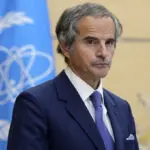 UN nuclear head to visit Iran for talks on country's nuclear program as next Trump presidency looms
UN nuclear head to visit Iran for talks on country's nuclear program as next Trump presidency looms
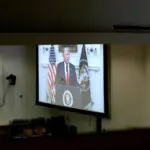 How a Trump presidency could lead to a purge at the Pentagon
How a Trump presidency could lead to a purge at the Pentagon
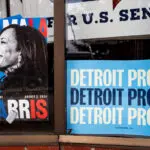 Harris' Michigan loss highlights Democrats' many weak spots
Harris' Michigan loss highlights Democrats' many weak spots
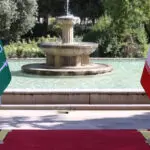 Saudi armed forces general chief of staff to hold talks in Iran
Saudi armed forces general chief of staff to hold talks in Iran
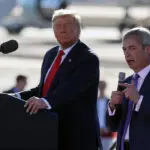 UK minister rules out using Nigel Farage as link to Trump
UK minister rules out using Nigel Farage as link to Trump
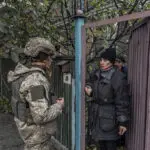 Drones strike Moscow as top UK official highlights Russian casualties in Ukraine
Drones strike Moscow as top UK official highlights Russian casualties in Ukraine
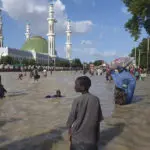 Multilateral banks are key to financing the fight against global warming. Here is how they work
Multilateral banks are key to financing the fight against global warming. Here is how they work
 Children's book by chef Jamie Oliver withdrawn after First Nation Australians voice offense
Children's book by chef Jamie Oliver withdrawn after First Nation Australians voice offense
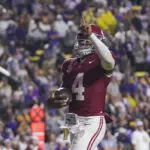 Jalen Milroe runs for career-high 185 yards and 4 TDs as No. 11 Alabama thrashes No. 14 LSU 42-13
Jalen Milroe runs for career-high 185 yards and 4 TDs as No. 11 Alabama thrashes No. 14 LSU 42-13

